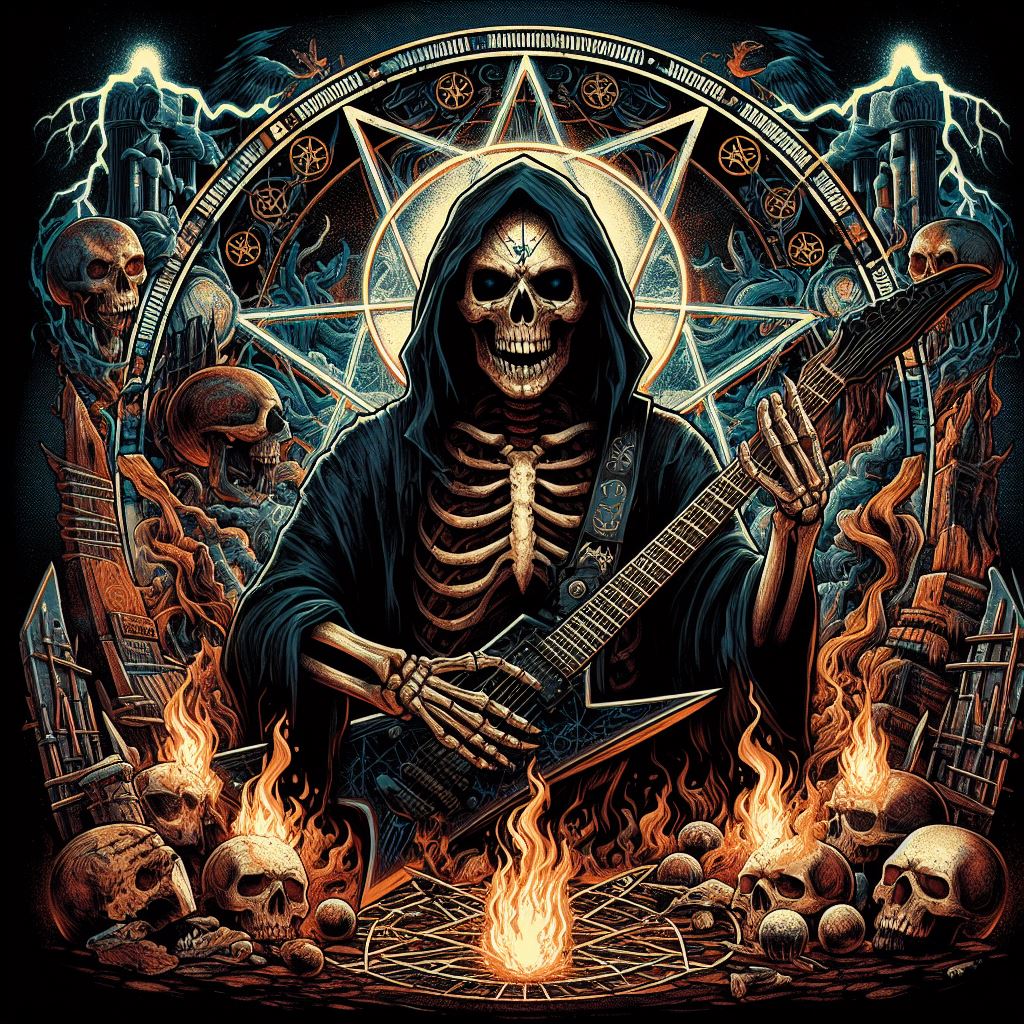Kreator, a name synonymous with blistering riffs, pummeling drums, and Mille Petrozza’s iconic snarl, stands as a titan in the thrash metal pantheon. Their story, spanning over four decades, is one of relentless innovation, unwavering aggression, and enduring influence.
From Metal Militia to Kreator: Early Days and Thrashing Fury (1982-1987)
The band’s origins trace back to 1982 in Essen, Germany, under the moniker Metal Militia. Soon after, they morphed into Tyrant, releasing demos that captured the burgeoning thrash scene’s raw energy. However, it was under the name Kreator, adopted in 1984, that they truly began their ascent. The original lineup consisted of Mille Petrozza (vocals/guitar), Rob Fioretti (bass), and Jürgen “Ventor” Reil (drums).
Their debut album, “Endless Pain” (1985), recorded in a mere ten days, was a sonic assault. Tracks like “Pleasure to Kill” and “Endless Pain” showcased their blend of Venom’s darkness, Slayer’s ferocity, and Metallica’s technical prowess. While Petrozza handled rhythm guitar duties on the album, future Sodom guitarist Michael Wulf joined for the tour, allowing Mille to unleash his signature vocal attack.
Kreator quickly established themselves as leaders of the “Teutonic Thrash” movement alongside Destruction and Sodom. Albums like “Pleasure to Kill” (1986) and “Terrible Certainty” (1987) solidified their reputation. Mille’s songwriting matured, tackling themes of war, societal collapse, and existential dread. Tracks like “Betrayer” and “Extreme Aggression” became thrash anthems, cementing Kreator’s place in metal history.
Evolution and Experimentation: Pushing the Boundaries of Thrash (1989-1999)
As the late 80s rolled in, Kreator continued to evolve. “Extreme Aggression” (1989) saw their sound become tighter, more technical, and faster. However, it was “Coma of Souls” (1990) that marked a significant shift. Industrial and death metal influences crept into their music, evident in tracks like “People of the Lie” and “When the Sun Burns Black.”
The 90s proved to be a period of experimentation. “Renewal” (1992) embraced a more melodic approach, dividing some fans. “Cause for Conflict” (1995) saw a return to aggression, while “Outcast” (1997) explored a darker, more atmospheric sound. Despite these stylistic explorations, Kreator never lost their core identity.
A New Millennium, A Continued Legacy (2001-Present)
The new millennium ushered in a renewed focus on aggression. “Violent Revolution” (2001) marked a return to their thrash roots, while albums like “Enemy of God” (2005) and “Hordes of Chaos” (2009) showcased a band firing on all cylinders.
The lineup saw some changes, with bassist Frédéric Leclercq and guitarist Sami Yli-Sirniö joining the fold. However, the core songwriting duo of Mille and Ventor remained a constant driving force.
Recent releases like “Phantom Antichrist” (2012), “Gods of Violence” (2017), and “Hate Über Alles” (2022) demonstrate that Kreator continues to push boundaries. They haven’t become a nostalgia act, but rather a band that consistently delivers high-quality thrash metal, earning them a new generation of fans.
Kreator’s Impact: Beyond Thrash Metal
Kreator’s influence on metal is undeniable. Their blend of aggression, technicality, and atmosphere paved the way for countless bands across the thrash and death metal spectrum. Their impact extends beyond extreme metal; their experimentation with industrial and melodic elements resonates in various genres.
More importantly, Kreator embodies the spirit of thrash metal. Their music is a potent cocktail of social commentary, rebellion, and raw energy. They are a band that has consistently challenged the boundaries of their genre, maintaining their relevance for over four decades. Kreator’s legacy is secure – they are thrash metal titans, and their music will continue to inspire generations of headbangers to come.

Leave a Reply
You must be logged in to post a comment.